Table of contents
Learn more about the history of Pythonisas!
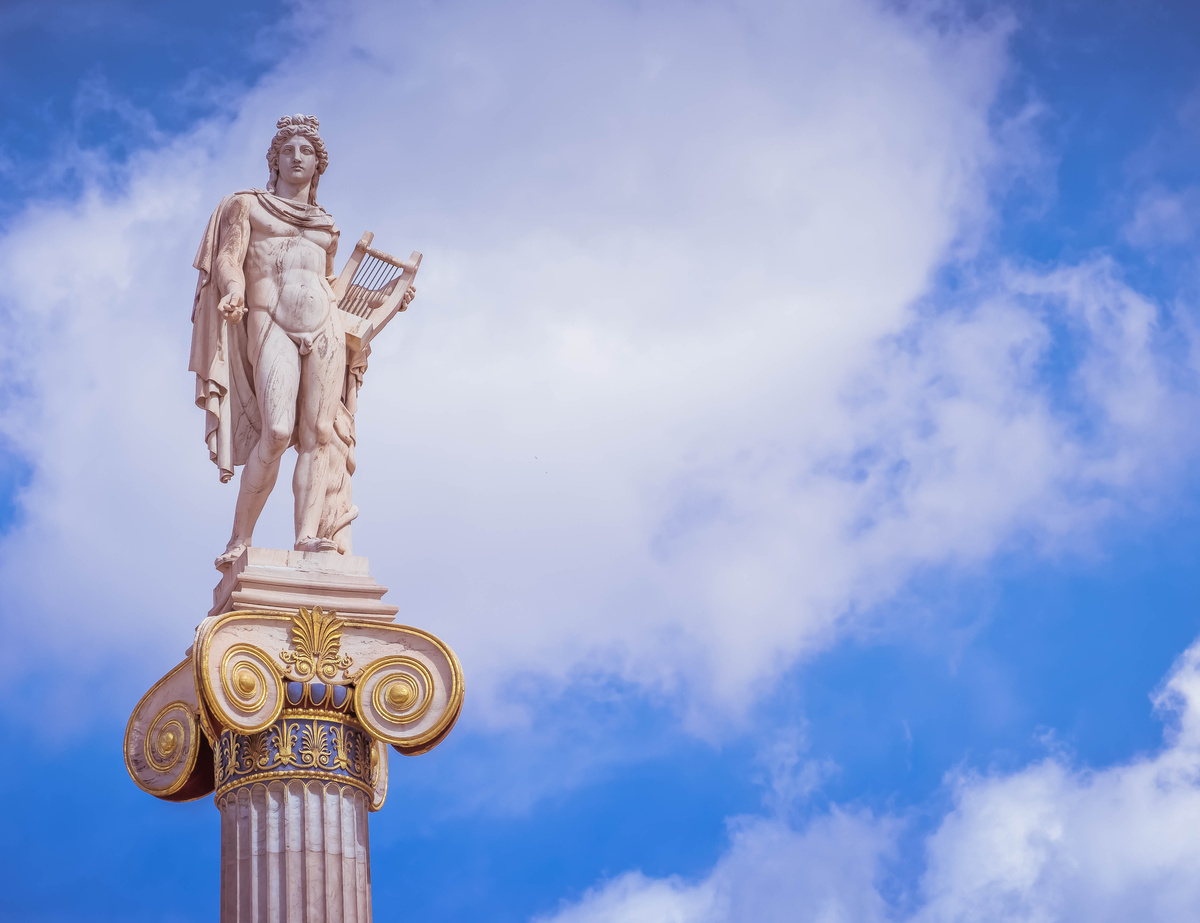
Pythonia, also known as Pythia, was the name given to the priestess who served at the Temple of Apollo in the city of Delphi, located near Mount Parnassus in Ancient Greece. Unlike many Greek women who were considered second-class citizens, the Pythia was one of the most powerful women in Greek society.
Because of her predictive powers brought about through her direct contact with the god Apollo, the priestess of Apollo, also known as the Oracle of Delphi, was commonly sought after.
People used to cross the whole Mediterranean to seek help and advice from the priestess in Delphi, a place with a lot of mythological relevance for the Greeks. In this article, we bring the light of the god Apollo to this priestly class so important, but so forgotten in the history books.
In addition to presenting the origin and history of pythonesses, we show how the oracle was organized, the evidence of their powers, as well as whether they still exist today. Get ready to travel through time and access the secrets of this interesting part of ancient history. Check it out.
Getting to know Pitonisa

To better understand the Pythia's roots, nothing better than investigating her origin and history. After this historical journey, you will have information about the presence of this priestess nowadays, as well as details about the Temple of Apollo. Check it out.
Source
The name Pythia or Pythoness, comes from the Greek word meaning serpent. According to the myth, there was a snake represented as a medieval dragon that lived in the center of the earth, which, for the Greeks was located in Delphi.
According to the myth, Zeus slept with the god Leto, who became pregnant with the twins Artemis and Apollo. Upon learning what happened, Hera, wife of Zeus, sent a serpent to kill Leto, before he gave birth to the twins.
The serpent's task failed and the twin gods were born. In the future, Apollo returns to Delphi and manages to kill the serpent Python at the Oracle of Gaia. Then, Apollo becomes the owner of this Oracle which becomes the center of worship to this god.
History
After completing the renovation of the Temple, Apollo appointed the first Pythoness approximately in the 8th century before the Common Era.
Then, through the use of a kind of trance obtained by the vapors that came out of the temple's crevice and that allowed her body to be possessed by the god, the Pythia made prophecies, which made her the most prestigious oracular authority among the Greeks.
At the same time, due to her prophetic powers, the priestess of Apollo was considered one of the most powerful women in all classical antiquity. Famous authors such as Aristotle, Diogenes, Euripides, Ovid, Plato, among others, mention in their works this oracle and its power.
It is believed that the Oracle of Delphi had its operation until the 4th century of the Common Era, when Roman Emperor Theodosius I ordered the closure of all pagan temples.
Pythonisas at present
Today, the Oracle of Delphi is part of a large archaeological site that is part of the Unesco World Heritage Site. The ruins of the Oracle can still be visited in Greece.
Although the direct transmission of the prophetic secrets of the Pythia across the centuries is not known, in many attempts to practice Hellenistic pagan reconstructionism, whose basis is the ancient religion of the Greeks, there are contemporary priestesses who dedicate their journey to Apollo and who can make prophecies under the god's influence.
Temple of Apollo
The Temple of Apollo has still survived time and is dated to approximately 4 centuries before the Common Era. It was erected under the rubble of an older temple, dated to about 6 centuries before the Common Era (i.e. it is over 2600 years old).
It is believed that the ancient temple was destroyed because of fire and earthquake effects. Inside Apollo's temple there was a central part called the edict, which was also the throne on which the Pythoness sat and uttered her prophecies.
In the temple, there was a rather famous inscription that read "know thyself", one of the Delphic maxims. Much of the temple and its statues were destroyed in the year 390, when the Roman emperor Theodosius I decided to silence the oracle and destroy all traces of paganism in the temple.
Organization of the Oracle
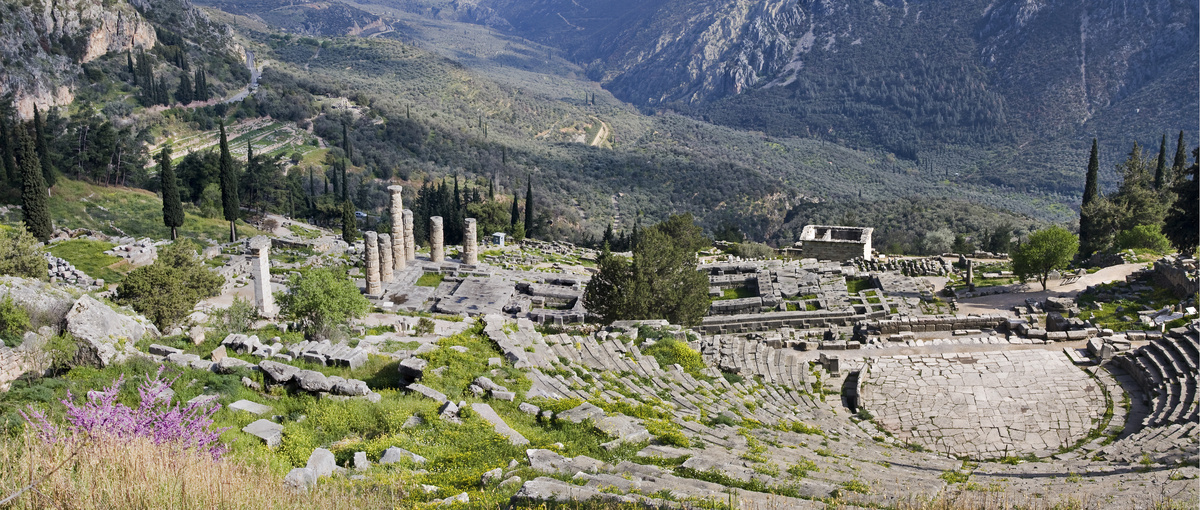
The Temple of Apollo was where the Oracle was located. To understand a little more about how it worked, read on for more information about the threefold basis of its organization.Check it out.
Priestess
From the beginning of the functioning of the Oracle of Delphi, it was believed that the god Apollo dwelt within a laurel tree, sacred to this god, and that he was able to give the oracles the gift of seeing the future through its leaves. The art of divination was taught by the god to the three winged sisters of the Parnassus, known as Trias.
However, it was only with the introduction of the Cult of the god Dionysus in Delphi that Apollo brought ecstasy to his followers and the oracular power through the Pythia, his priestess. Sitting on a stone near a crevice that spewed vapors, the priestess of Apollo entered into a trance.
In the beginning, the Pythonesses were beautiful young virgins, but after one of the priestesses was kidnapped and raped in the 3rd century before the Common Era, the Pythonesses became women older than 50 to avoid the problem of rape. However, they were dressed and groomed to look like young girls.
Other officiants
Besides the Pythia, there were many other officiants at the Oracle. After the 2nd century B.C., there were 2 priests of Apollo in charge of the sanctuary. The priests were chosen from among the leading citizens of Delphi and had to devote their whole lives to their office.
Besides looking after the Oracle, it was part of the priestly work to conduct sacrifices at other festivals dedicated to Apollo, as well as to command the Pythian Games, one of the predecessors of today's Olympics. There were also other officiants such as the prophets and the blessed, but little is known about them.
Procedure
According to historical records, the Oracle of Delphi could only prophesy during the nine hottest months of the year. During winter, it was believed that Apollo abandoned his Temple, which was then occupied by his half-brother, Dionysus.
Apollo returned to the temple during the spring, and once a month the oracle had to undergo purification rites that included fasting so that the Pythia could establish communication with the god.
Then, on the seventh day of each month, she was guided by the priests of Apollo with a purple veil covering her face to then make her prophecies.
Experience of the supplicants
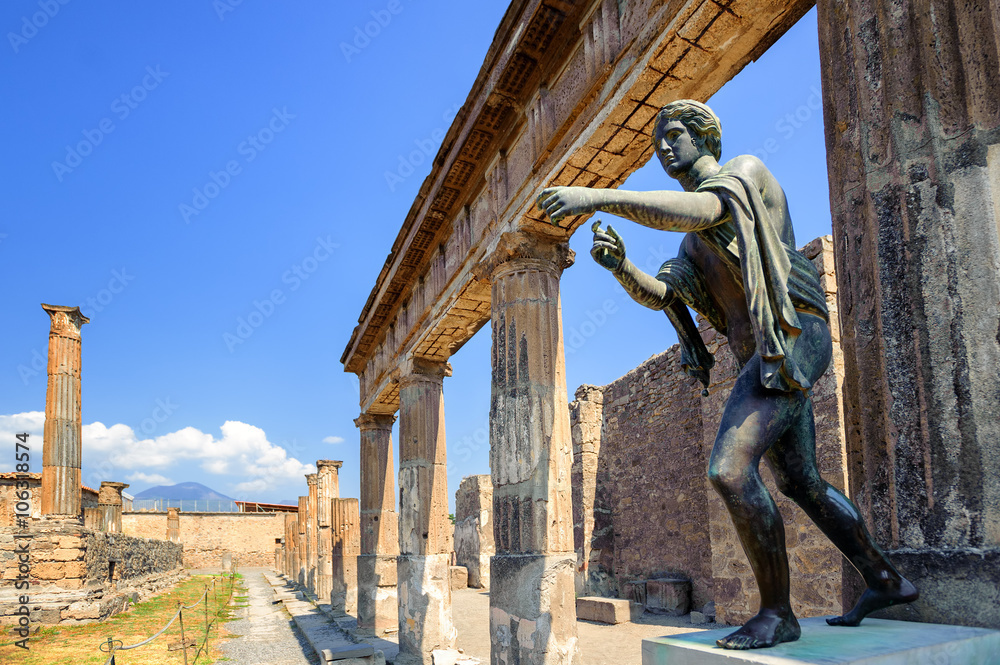
In ancient times, people who visited the Oracle of Delphi for advice were called supplicants. During this process, the supplicant underwent a kind of shamanic journey that had 4 different phases and were part of the consultation process. Find out what these phases are and how they worked below.
Journey to Delphi
The first step of the consultation process with the Pythia was known as The Journey to Delphi. In this journey, the suppliant would set off towards the Oracle motivated by some need and would then have to undergo a long and arduous journey in order to consult the oracle.
Another main motivation for this journey was to meet the oracle, meet other people during the journey, and gather information about the oracle so that then the supplicant could find the answers they sought to their questions.
Preparation of the supplicant
The second step in the shamanic journey to Delphi was known as the Preparation of the Supplicant. At this stage, supplicants would undergo a sort of interview in order to be presented to the oracle. The interview was conducted by the temple priest, who was responsible for deciding which cases deserved the oracle's attention.
Part of the preparation involved presenting their questions, offering gifts and offerings to the oracle and following the procession on the Sacred Way, wearing laurel leaves as they entered the temple, symbolizing the path they had traveled to get there.
Visit to the Oracle
The third step was the Visit to the Oracle itself. In this step, the supplicant was led to the edict, where the Pythia was, in order to ask her questions.
When they were answered, he was to leave. To reach this state, the supplicant went through many ritualistic preparations to get into a deep meditative state appropriate for his consultation.
Back home
The fourth and final step of the journey to the Oracle, was the Homecoming. Since the oracles main function was to provide answers to questions and thus help shape strategies to promote actions in the future, the homecoming was essential.
Besides following the Oracle's directives for a desired unfolding, it was up to the supplicant to apply the knowledge gained from it to confirm the consequences pointed out.
Explanations of the work of pythonesses
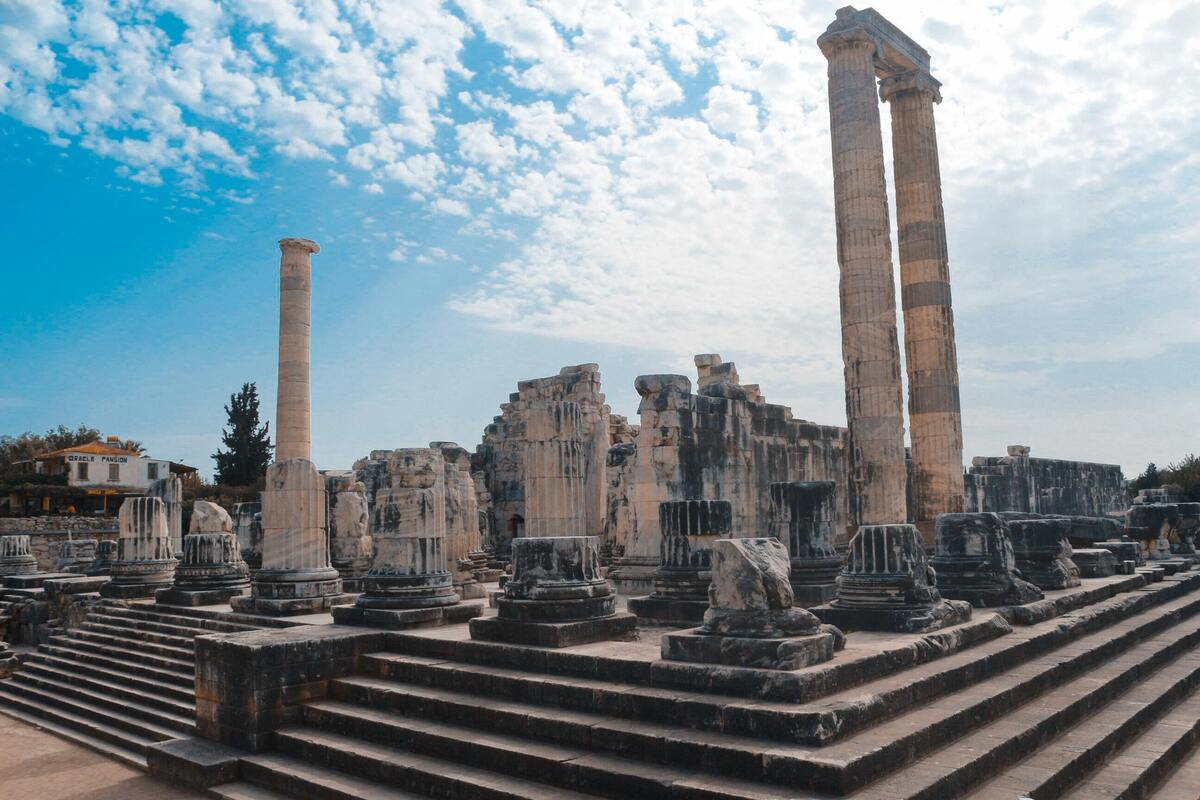
There are many scientific and spiritual explanations of the work of pythonesses. The following are three main ones:
1) smoke and fumes;
2) excavations;
3) illusions.
With them, you will be able to understand how the oracle works, check it out.
Smoke and fumes
Many scientists have tried to explain how the Pythonesses got their prophetic inspirations by means of the smoke and vapors that came out of the crack in the Temple of Apollo.
According to the work of Plutarch, a Greek philosopher who was trained as a high priest at Delphi, there was a natural spring that flowed below the temple, whose waters were responsible for the visions.
However, it is not known exactly the chemical components present in the water vapor of this spring. It is believed that they were hallucinogenic gases, but there is no scientific proof. Another hypothesis is that the hallucinations or state of divine possession was caused by inhaling the smoke of a plant that grew in the area.
Excavations
Excavations begun in 1892 by a team of French archaeologists led by Théophile Homolle of the Collège de France brought another problem: no fissures were found at Delphi. The team also found no evidence of smoke production in the area.
Adolphe Paul Oppé was even more incisive in 1904, when he published a rather polemic article, for stating that there was no vapor, nor gases that could provoke visions. Moreover, he found inconsistencies about some incidents involving a priestess.
However, more recently, in 2007, evidence was found of a fountain on the site, which would make it possible to use vapors and fumes to enter a trance state.
Illusions
Another very interesting topic about the work of Pythonesses was about the illusions or state of trance they reached during their divine possession. Scientists debated for years to find a plausible answer about the trigger that led the priestesses of Apollo to enter trance.
Recently, it has been realized that the Temple of Apollo possessed an organization quite different from any other Greek temple. Moreover, the position of the temple edict was probably related to the possible fountain that existed under the center of the temple.
With the help of toxicologists, it was discovered that there was probably a natural deposit of ethylene gas just below the temple. Even in smaller concentrations, such as 20%, this gas is capable of causing hallucinations and altering the state of consciousness.
In 2001, in a spring near Delphi, a significant concentration of this gas was found, which would confirm the hypothesis that the illusions were caused by the inhalation of this gas.
Pythia was the high priestess of the Temple of Apollo in Greek mythology!
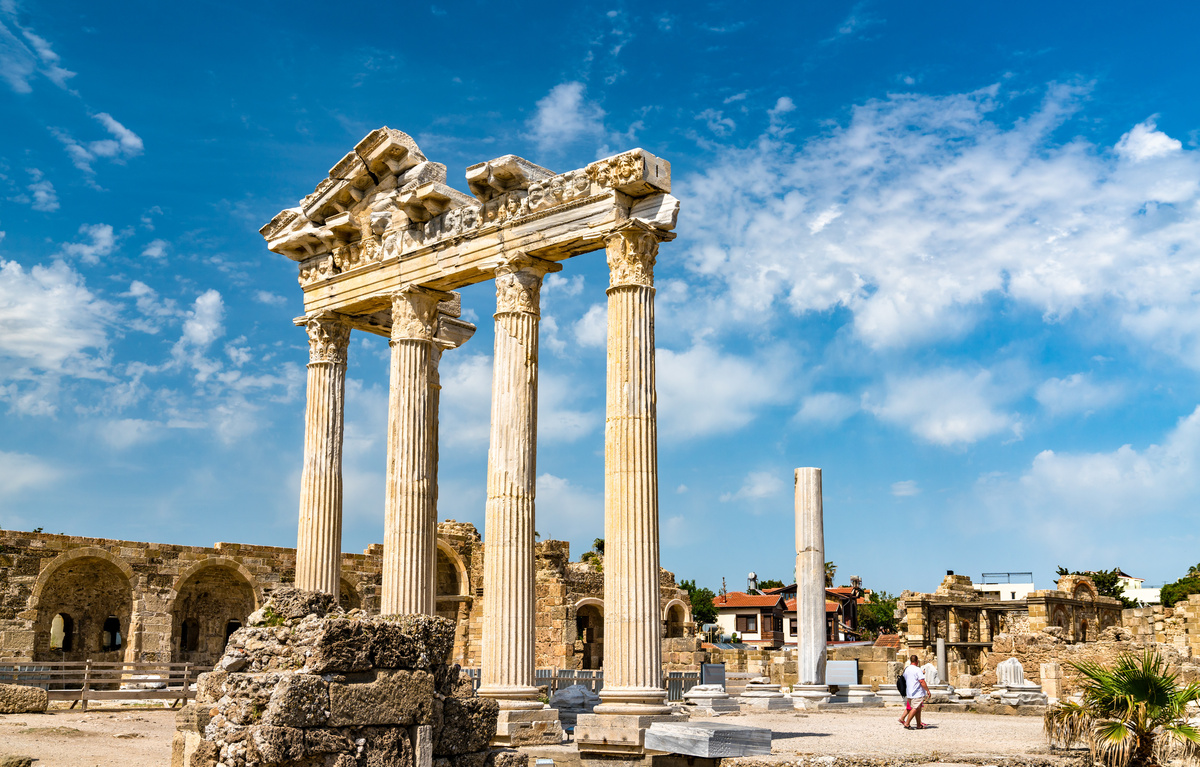
As we have shown throughout the article, the Pythia was the name given to the high priestess of the Temple of Apollo, located in Delphi, a central city of Greek mythology.
Although it is not known for sure how Pythonesses were chosen, it is known that they were some of the most powerful women in Classical Antiquity, from diverse backgrounds, from noble families to peasant families.
For centuries, the Pythia was a figure of power, visited by important people of antiquity as kings, philosophers and emperors who sought her divine wisdom to get answers to their concerns.
Although it was common to have only one pythoness in the temple, there was a time when her popularity was so great that the Temple of Apollo could hold three pythonesses simultaneously.
In a male-dominated culture, the figure of the Pythia emerged as an act of resistance and inspiration for many women who began to aspire to become a priestess of Apollo, dedicating their lives to her divine work. Today, they still maintain this importance, remembering the divine power that exists in every woman.

